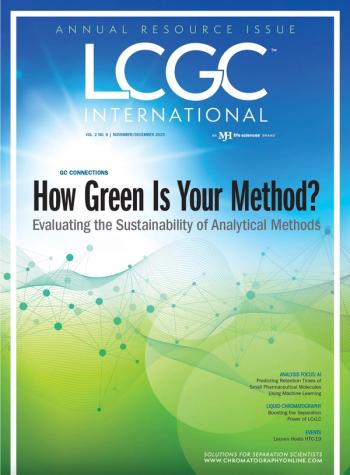
- The Column-08-20-2010
- Volume 6
- Issue 15
I can't believe it's not diesel
The search for new raw materials for making biodiesel fuel has led scientists to an unlikely farm product - butter.
The search for new raw materials for making biodiesel fuel has led scientists to an unlikely farm product - butter. Biodiesel production is now approaching 1 billion gallons annually in the US and is expected to go up as demand for eco-friendly fuel sources increases. To keep the costs of biodiesel production down, a range of low cost sources are being considered and according to a report in the Journal of Agricultural and Food Chemistry leftover butter could be used.1
Biodiesel consists of the simple fatty acids methyl esters (FAME) derived from vegetable and animal fats and oils. Through melting, catalysation and separation, 287.7 L of FAME was collected from 348.2 L of butter. HPLC was used to confirm the results to be essentially pure FAME. After a series of official biodiesel quality control tests, including GC methods, the fuel met all but one of the test standards, showing the potential for excellent ignition qualities, good cold-starting performance and reduced smoke emissions. The study concluded that with further purification or by blending with biodiesel from other feedstocks, butter biodiesel could add to the supply of bio‑based fuel for diesel engines.
1. M.J. Haas et al., J. Agric. Food Chem., 58(13),7680-7684 (2010).
Articles in this issue
over 15 years ago
Developing Malaysian biotechnologyover 15 years ago
Charting the microbial landscapeover 15 years ago
Supporting breast cancer researchover 15 years ago
Characterizing PEGylated Proteins by MALS-UV-RI Detectionover 15 years ago
Musings from the Little Black Book of GC (Part 3)Newsletter
Join the global community of analytical scientists who trust LCGC for insights on the latest techniques, trends, and expert solutions in chromatography.



